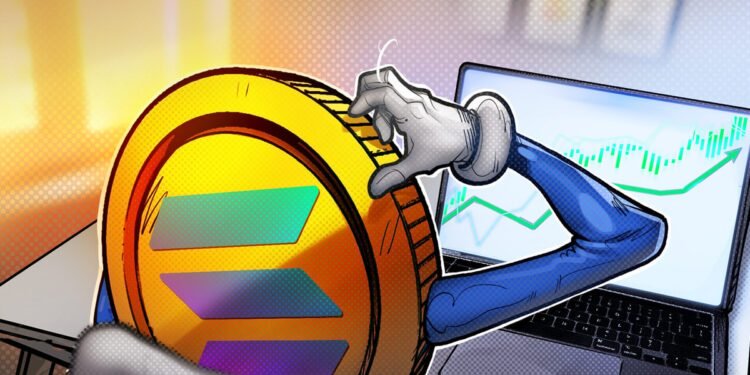Key takeaways:
Solana community exercise and costs have declined, but spot ETF expectations preserve investor curiosity in SOL.
Validator revenue sustainability and staking inflation are dangers, however institutional inflows might drive SOL positive factors.
Solana’s native token, SOL (SOL), surged 10.5% after testing the $191 stage on Friday. Even with this rebound, the token’s worth stays 10% decrease over the previous two weeks, trailing rivals Ether (ETH) and BNB (BNB). Merchants are actually weighing SOL’s probabilities of climbing again to $250 and attempting to know the elements behind its weaker efficiency.
Investor sentiment improved over the weekend after US President Donald Trump signaled his intention to keep away from a authorities shutdown of non-essential federal businesses. Nevertheless, Congress nonetheless has not secured the 60 votes required to move a brief funding invoice by Tuesday, risking “unpredictable and speedy financial ripples,” according to Yahoo Finance.
In the meantime, gold reached an all-time excessive of $3,833 on Monday, underlining continued unease concerning the US fiscal debt outlook. Even when lawmakers strike a short-term deal, the Treasury should nonetheless pay greater than $1 trillion yearly in curiosity. This widening hole between authorities revenues and expenditures is pushing savers towards scarce property, together with cryptocurrencies.
Though the broader cryptocurrency market posted positive factors on Monday, SOL has been unable to carry the $212 stage. A part of the frustration amongst buyers stems from declining exercise throughout the Solana community.
Over the previous seven days, the variety of transactions on Solana fell by 10%, whereas charges dropped practically 50%, in response to Nansen knowledge. Against this, a number of rivals posted notable will increase, together with a 56% soar in charges on BNB Chain, whereas Arbitrum and HyperEVM greater than doubled their price income from the prior week.
Perpetual futures surge on Hyperliquid, Aster, whereas edgeX hurts SOL sentiment
The fast growth of artificial perpetual futures on Hyperliquid, Aster and edgeX has additionally weighed on sentiment towards SOL. Solana as soon as led decentralized change exercise via platforms comparable to Meteora, Raydium and Pump, which led many SOL holders to overestimate the community’s aggressive edge on charges and consumer expertise.
Hyperliquid has chosen to launch its personal chain to scale back charges and get rid of validators’ maximal extractable value (MEV). Aster, a mission backed by YZi Labs (previously Binance Labs) and at the moment built-in with BNB Chain, additionally plans to introduce its own layer-1 community.
For SOL bulls, the strongest catalyst for reversing the token’s underperformance is the anticipated approval of normal exchange-traded funds (ETFs) by the USA Securities and Alternate Fee (SEC). The regulator faces a final deadline on Oct. 10, and analysts assign odds of 95% or larger to an approval, fueling hopes for substantial inflows in the course of the first months of buying and selling.
Associated: Aster weighs vesting schedules for token airdrop recipients
SOL’s momentum additionally hinges on how buyers view its native staking yield. Critics warn that Solana’s inflation poses a threat, given the community’s practically 1,000 validators and their vital setup and operational costs.
In keeping with X consumer ‘Boxmining,’ 76% of validator revenue on the Solana community comes from newly issued cash, reasonably than MEV or precedence charges. The evaluation raises questions concerning the sustainability of the staking reward fee within the coming years, which might weigh on demand for a Solana ETF.
Merchants shouldn’t assume a worth decline based mostly solely on weaker onchain exercise, as inflows from firms accumulating SOL reserves and the potential approval of a spot ETF might set the stage for a SOL rally towards $250.
This text is for basic info functions and isn’t meant to be and shouldn’t be taken as authorized or funding recommendation. The views, ideas, and opinions expressed listed here are the writer’s alone and don’t essentially mirror or characterize the views and opinions of Cointelegraph.





